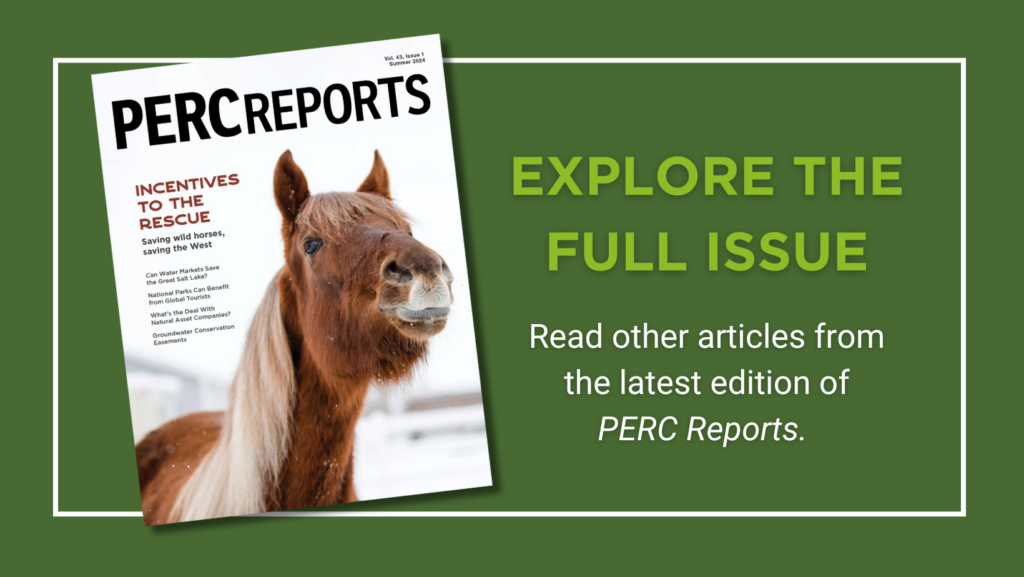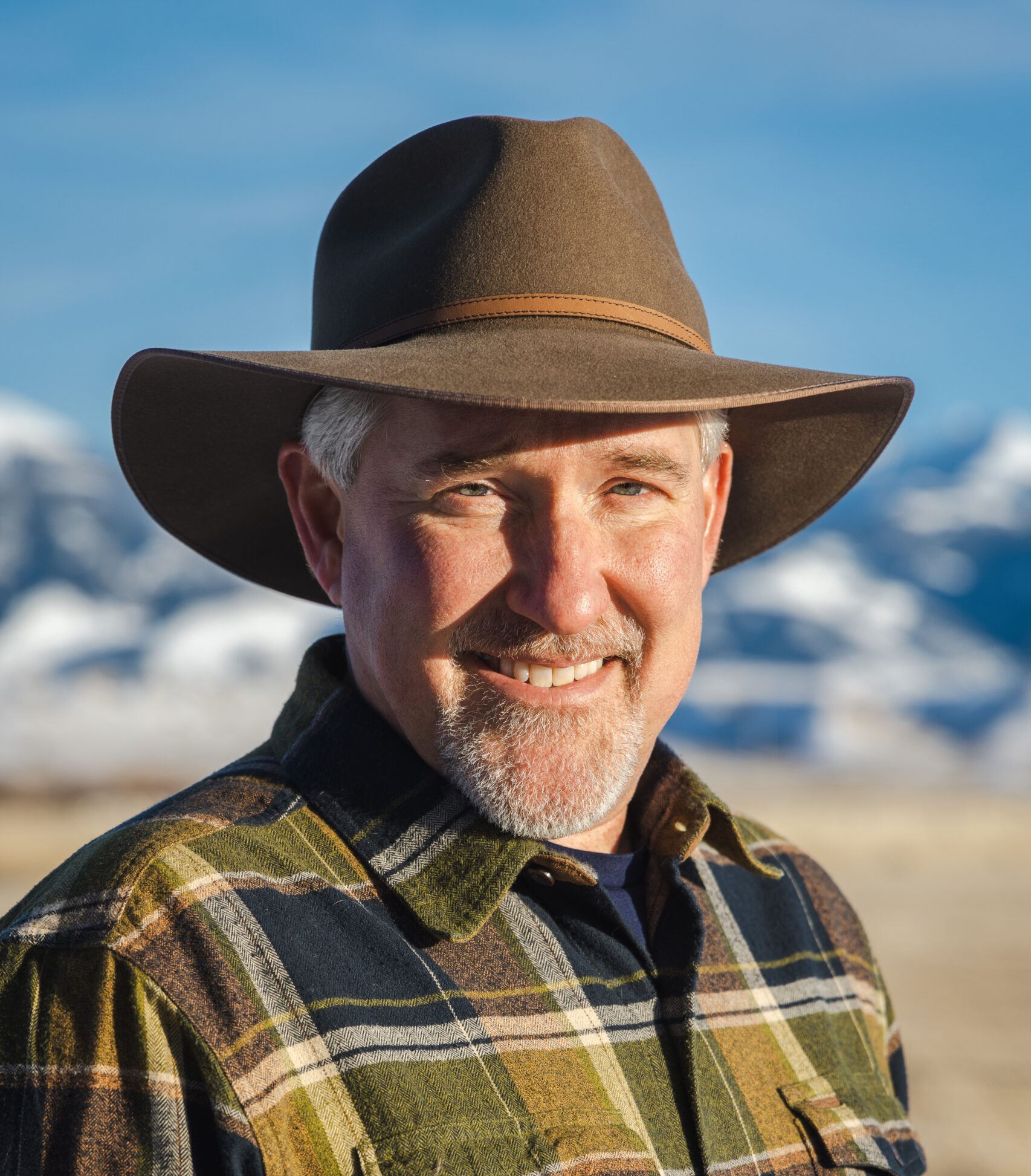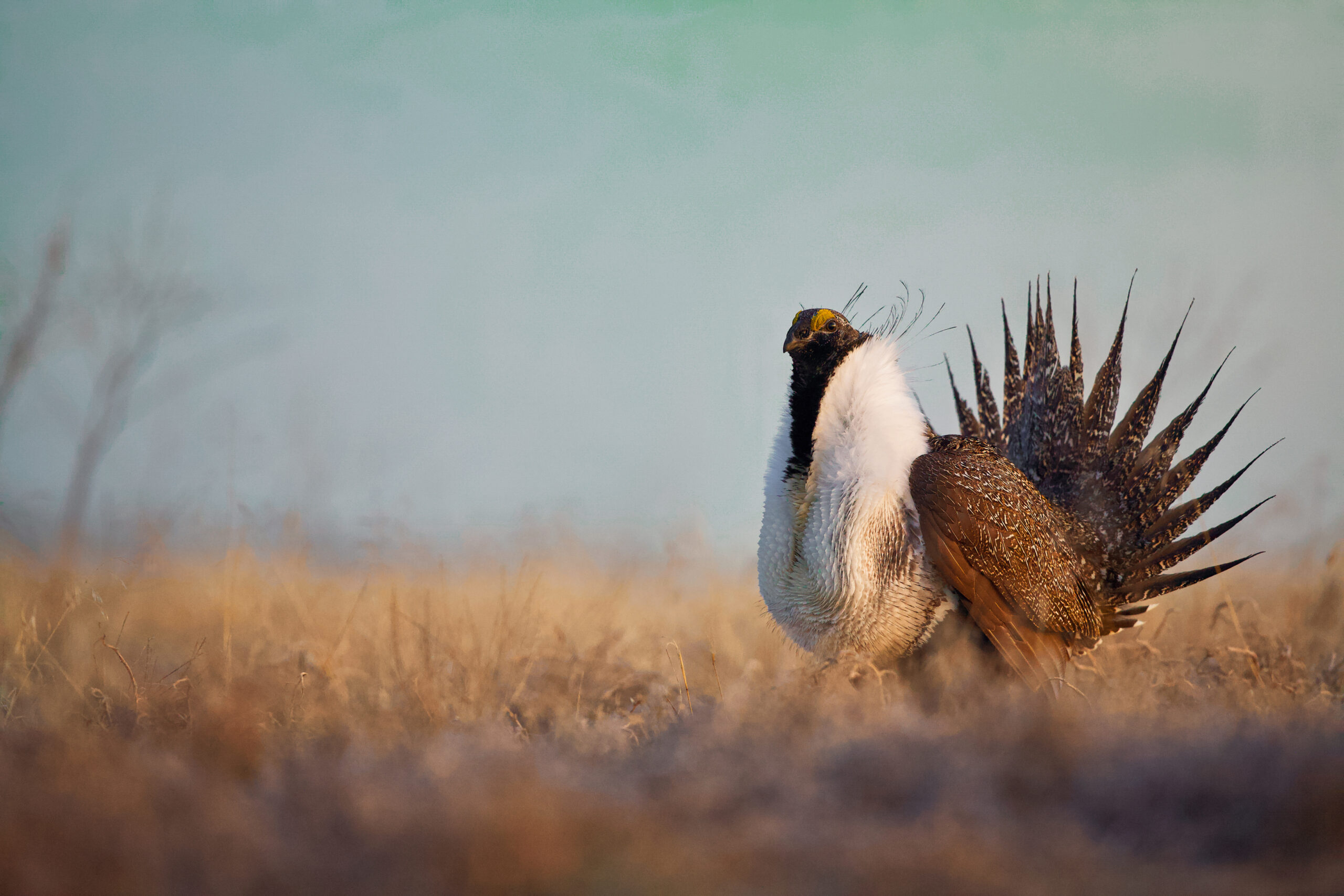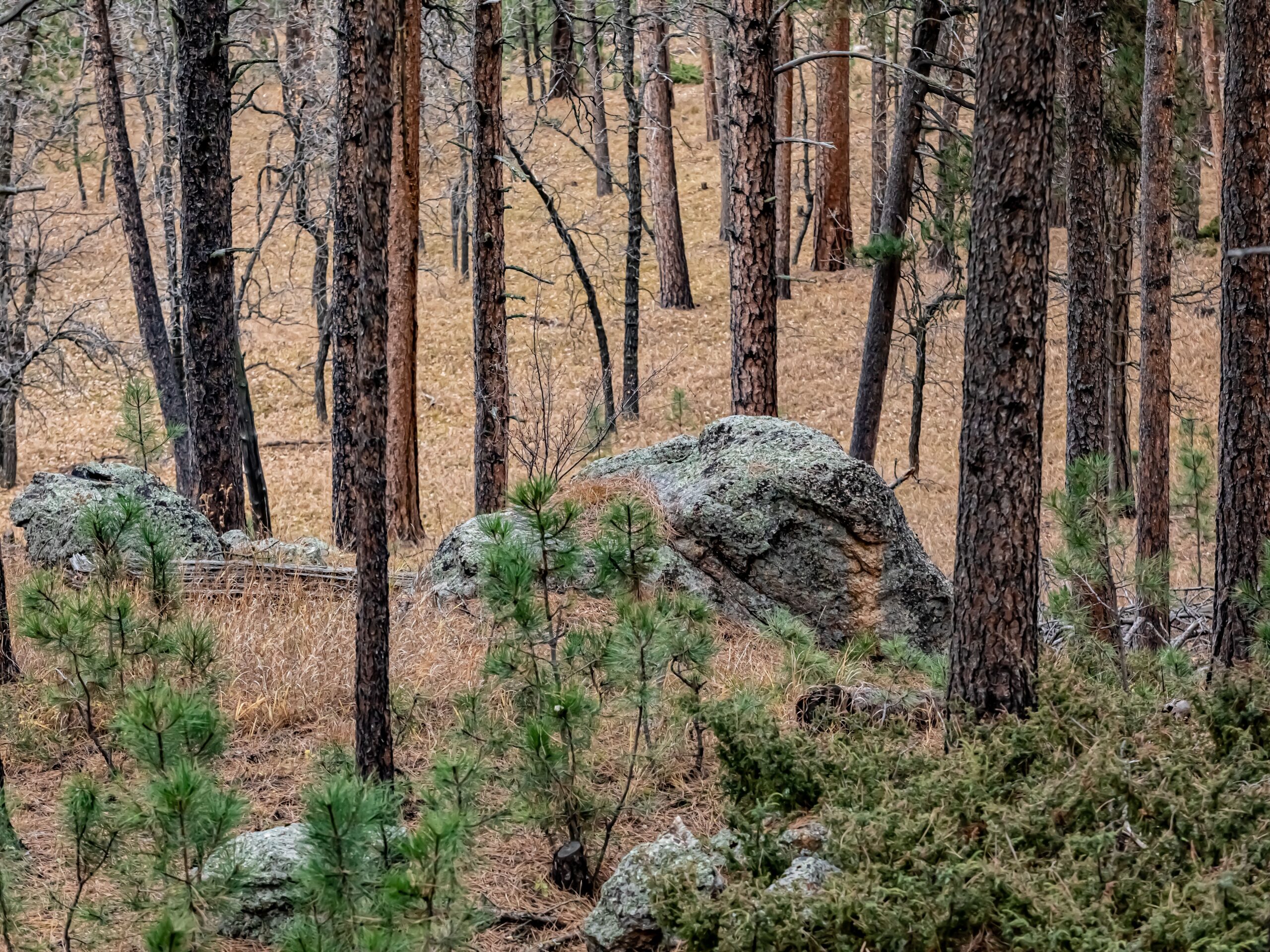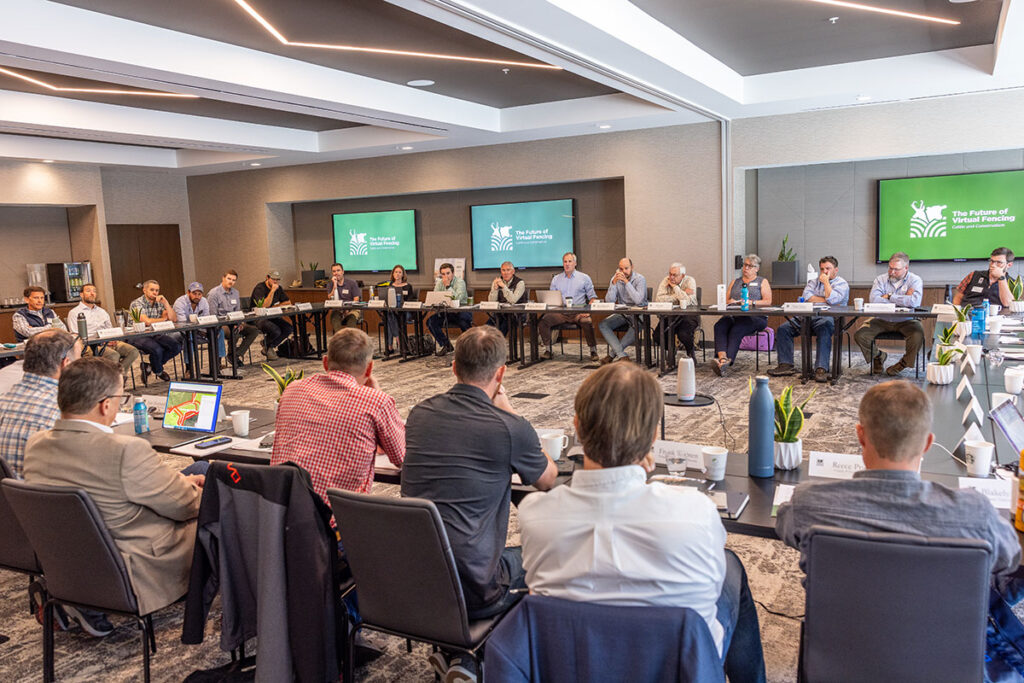
It was a gathering for the ages. A constitutional convention of sorts. In June, PERC hosted a workshop on an exciting new tool for both ranching and conservation called virtual fencing—a technology that represents the first significant development in fencing since the settling of the American West.
The event, “Cattle and Conservation: The Future of Virtual Fencing,” was held in partnership with the Beyond Yellowstone Program, headed up by elk ecologist Arthur Middleton, who serves as chief wildlife advisor to the U.S. Secretary of Agriculture. Seated at the table were experts and practitioners including ranchers, virtual fence companies, conservation groups, scientific and legal researchers, philanthropic foundations, as well as leaders from the U.S. Department of Agriculture, U.S. Fish and Wildlife Service, and Bureau of Land Management.
Virtual fences for livestock piggyback on a common tool for pets in American suburbs: the “invisible fence” used to keep dogs from wandering into the neighbor’s yard. Instead of using a wire buried underground to set the boundaries, however, the technology relies on base stations that emit radio signals to establish virtual boundaries. (See “The Invisible Revolution in Fencing,” Winter 2023/24.) Livestock are alerted by a warning sound when they approach the virtual fence line, usually a zone of many yards. If a cow continues forward, then a collar emits a low-voltage shock as a nudge to reverse course. Additionally, GPS transceivers allow ranchers to follow the precise movement of each cow, which appear as icons on a computer screen, resembling a video game.
The question is whether virtual fence technology can reduce the need for physical fencing on some of the largest landscapes in America. Further, can it be done in a way that is both economically beneficial to ranchers and ecologically beneficial to the land, water, and wildlife?
But ranches are not the suburbs. The question is whether virtual fence technology can reduce the need for physical fencing on some of the largest landscapes in America. Further, can it be done in a way that is both economically beneficial to ranchers and ecologically beneficial to the land, water, and wildlife?
For 150 years, fencing technology in the American West has remained static. In 1874, Joseph Glidden filed a patent for a twisting wire with barbs, a godsend for a region largely devoid of fence-building timber. That year, 10,000 pounds of barbed wire was sold. Six years later, that number increased to 80 million pounds. Today, more than 600,000 miles of fencing, mostly barbed wire, carve up western landscapes, enough fence to cover nearly three trips to the moon.
If barbed wire was the solution to better manage cattle, establish property rights, and create ranches, it also brought along side effects harmful to conservation. Ungulates like pronghorn and elk can be wounded by barbs, sometimes fatally, and raptors and other large birds collide with wires. Even when barbed wire doesn’t directly maim wildlife, physical fences impede migrating species, requiring them to spend valuable calories navigating the barriers. Wyoming’s Sublette County—traversed by wild ungulates making some of the longest migration routes in the West—has over 3,800 miles of fence, roughly twice the length of the U.S.-Mexico border. Jerod Merkle, a Beyond Yellowstone researcher who attended the workshop, said that one tracked mule deer in the county had to cross 124 fences in her annual migration from the Red Desert of Wyoming to the Hoback region near Jackson Hole.
Just as barbed wire transformed the West in the 1800s, virtual fencing is similarly primed to transform the modern West and help address the conservation challenges presented by traditional fencing. But it is still early in development, and the technology varies. Some companies’ collars use batteries, while some rely on solar power. Some systems use radio base stations, while others use existing cellular networks. Battery life is an issue, meaning ranchers must handle their cows more often. Connectivity is another challenge, especially in remote areas. And the companies’ customer service models will need some work if they expect ranchers to take the leap to virtual fences. The market, however, is poised to sort this all out in due time.
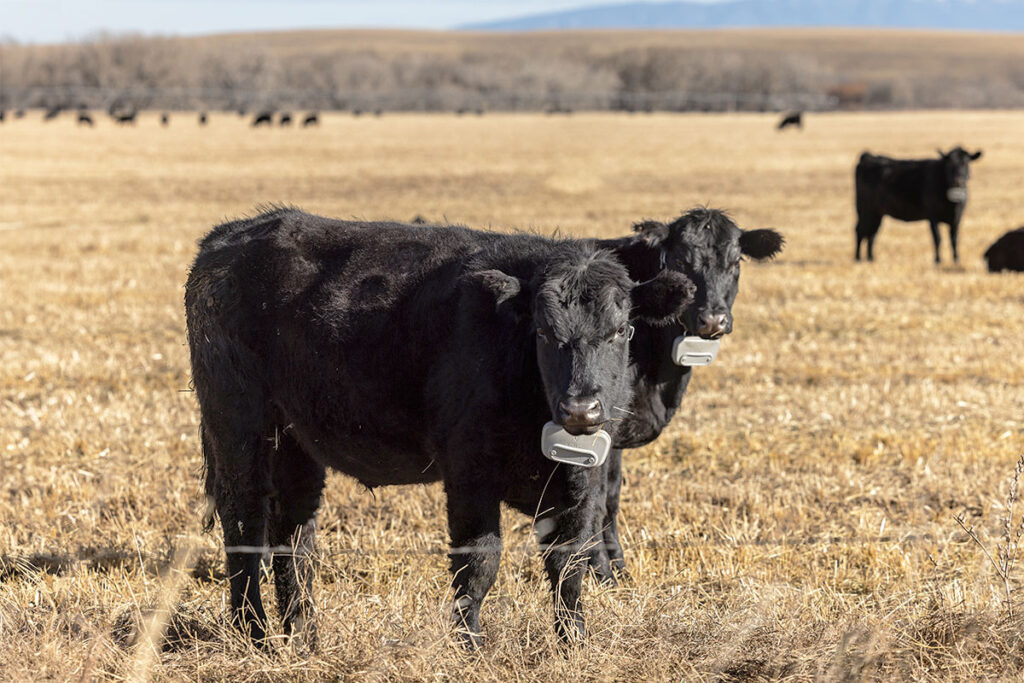
On a more inspiring note, the Bozeman group unpacked a range of conservation implications. Foremost, virtual fencing can be used to create exclosures. Cattle can be excluded from riparian areas to protect spawning runs for Chinook salmon and, in the case of a Nature Conservancy project, streams for the endangered Arctic grayling. It can also exclude cattle to enable regrowth in recently burned areas and protect winter range for elk and mule deer via occupancy agreements pioneered by PERC and the Greater Yellowstone Coalition. The fences can also keep cattle from bird nesting areas or from wild larkspur, a poisonous plant that kills cattle, thereby attracting dangerous predators to the herds to feed on carcasses.
The removal of internal fencing from ranches would not only benefit migrating animals like pronghorn but could be a positive in sage grouse habitat too. Raptors use physical fences as perches to prey on sage grouse. Similarly, physical fences can be lethal to low-flying lesser prairie chickens.
For ranchers partnering with the World Wildlife Fund, virtual fencing helps manage rotational grazing, which can lead to improved soil conditions for carbon sequestration, grassland health, and insects that grassland species count on for their diet.
As exciting as the conservation benefits seem, there are economic, legal, cultural, and policy barriers that hinder scaling up this innovation. The hard economic reality is that if it doesn’t help the rancher’s bottom line first, it will be difficult to deploy.
Some ranchers who are early adopters are looked upon in their communities with skepticism. For the federal government, processes can be deliberately slow for new conservation practices. Different agencies are not necessarily on the same page. And nobody wants this new technology to be hobbled by environmental permitting rules. Finally, states like Montana and Texas do not yet recognize virtual fences as a legal fence. These are the big issues this “founding” group is set to tackle.
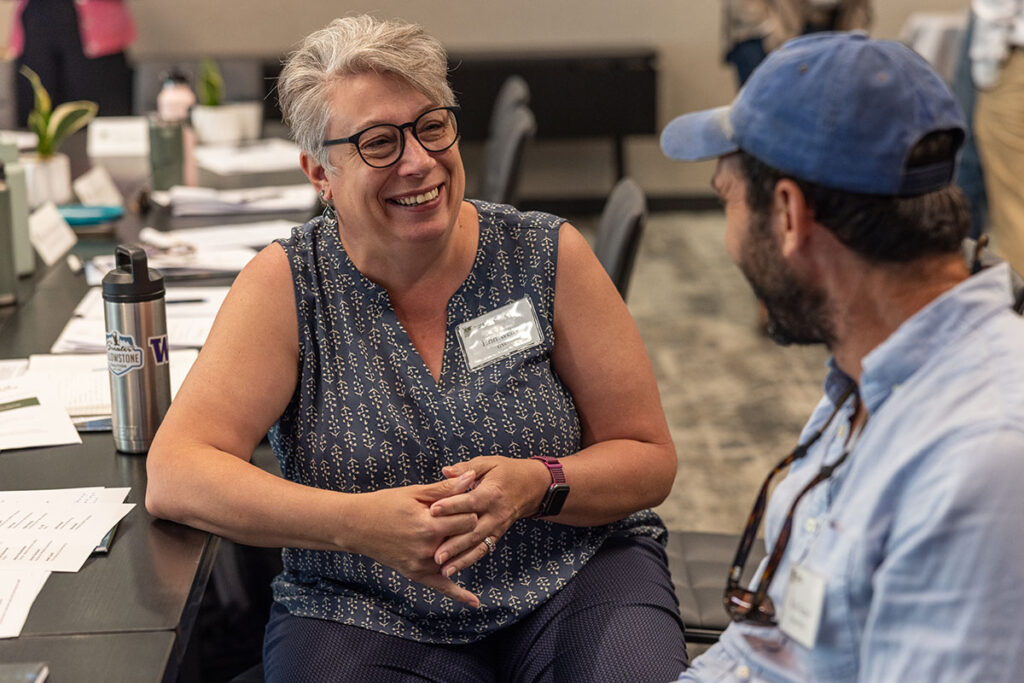
Two days of in-depth discussions reminded me of the early days of cell phones. The first one I ever used was known as “the brick.” Literally the size of a brick, it had 30 minutes of battery life and cost $4,000. Things only got better—and cheaper—from there, and cell phones are now used in ways that few would have imagined back then.
I wish I could tell you that we emerged with the “Bozeman Accord” for the future of virtual fencing and conservation. We did not. But look for concrete outputs and outcomes from this collaborative group, including a blueprint for scaling up virtual fencing that advances both ranching and conservation, policy changes, funding, and partnerships. Everyone agreed that conservationists can help provide a much-needed source of capital to bolster this upstart innovation. Success will come as conservationists seek to compensate private landowners for widely dispersed public benefits, and forward-thinking ranchers reap the rewards of diversified income streams.
